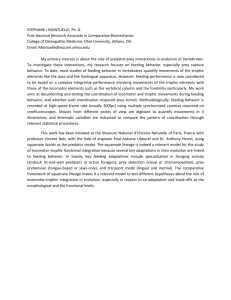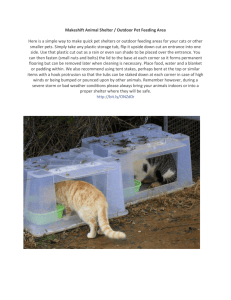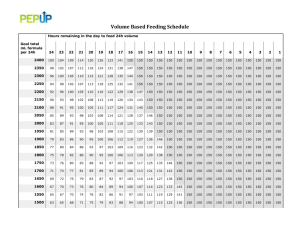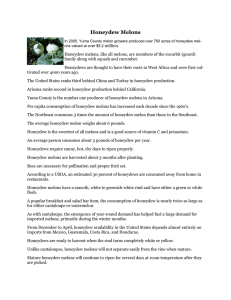IRRN 1989 14 (2) 35
advertisement
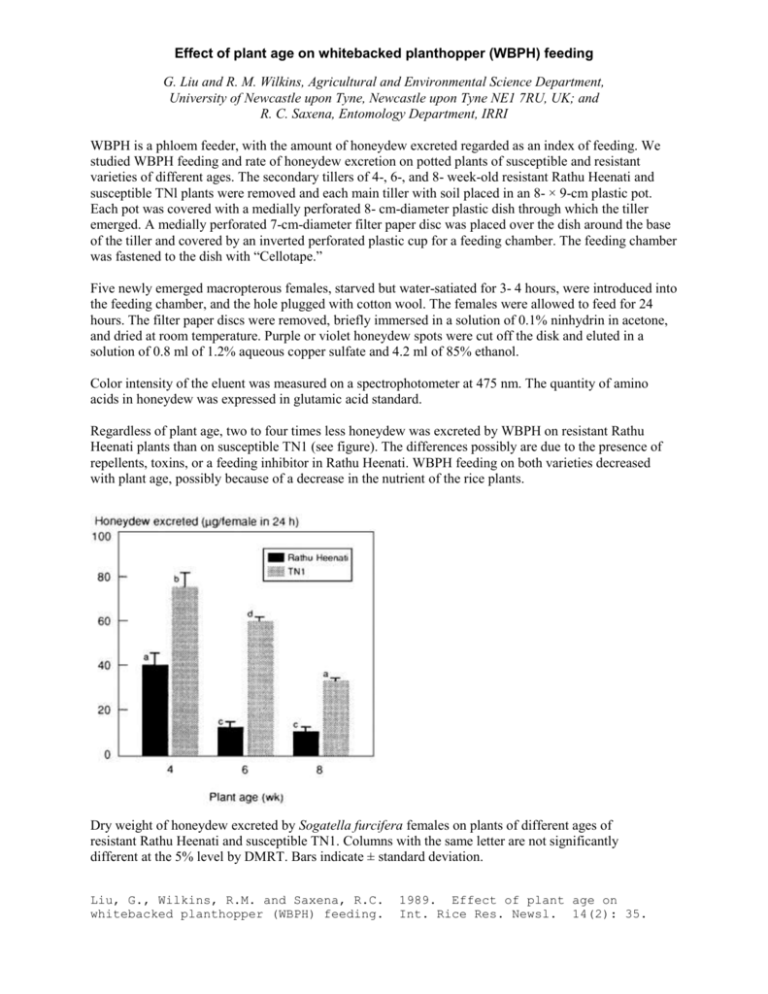
Effect of plant age on whitebacked planthopper (WBPH) feeding G. Liu and R. M. Wilkins, Agricultural and Environmental Science Department, University of Newcastle upon Tyne, Newcastle upon Tyne NE1 7RU, UK; and R. C. Saxena, Entomology Department, IRRI WBPH is a phloem feeder, with the amount of honeydew excreted regarded as an index of feeding. We studied WBPH feeding and rate of honeydew excretion on potted plants of susceptible and resistant varieties of different ages. The secondary tillers of 4-, 6-, and 8- week-old resistant Rathu Heenati and susceptible TNl plants were removed and each main tiller with soil placed in an 8- × 9-cm plastic pot. Each pot was covered with a medially perforated 8- cm-diameter plastic dish through which the tiller emerged. A medially perforated 7-cm-diameter filter paper disc was placed over the dish around the base of the tiller and covered by an inverted perforated plastic cup for a feeding chamber. The feeding chamber was fastened to the dish with “Cellotape.” Five newly emerged macropterous females, starved but water-satiated for 3- 4 hours, were introduced into the feeding chamber, and the hole plugged with cotton wool. The females were allowed to feed for 24 hours. The filter paper discs were removed, briefly immersed in a solution of 0.1% ninhydrin in acetone, and dried at room temperature. Purple or violet honeydew spots were cut off the disk and eluted in a solution of 0.8 ml of 1.2% aqueous copper sulfate and 4.2 ml of 85% ethanol. Color intensity of the eluent was measured on a spectrophotometer at 475 nm. The quantity of amino acids in honeydew was expressed in glutamic acid standard. Regardless of plant age, two to four times less honeydew was excreted by WBPH on resistant Rathu Heenati plants than on susceptible TN1 (see figure). The differences possibly are due to the presence of repellents, toxins, or a feeding inhibitor in Rathu Heenati. WBPH feeding on both varieties decreased with plant age, possibly because of a decrease in the nutrient of the rice plants. Dry weight of honeydew excreted by Sogatella furcifera females on plants of different ages of resistant Rathu Heenati and susceptible TN1. Columns with the same letter are not significantly different at the 5% level by DMRT. Bars indicate ± standard deviation. Liu, G., Wilkins, R.M. and Saxena, R.C. whitebacked planthopper (WBPH) feeding. 1989. Effect of plant age on Int. Rice Res. Newsl. 14(2): 35.

